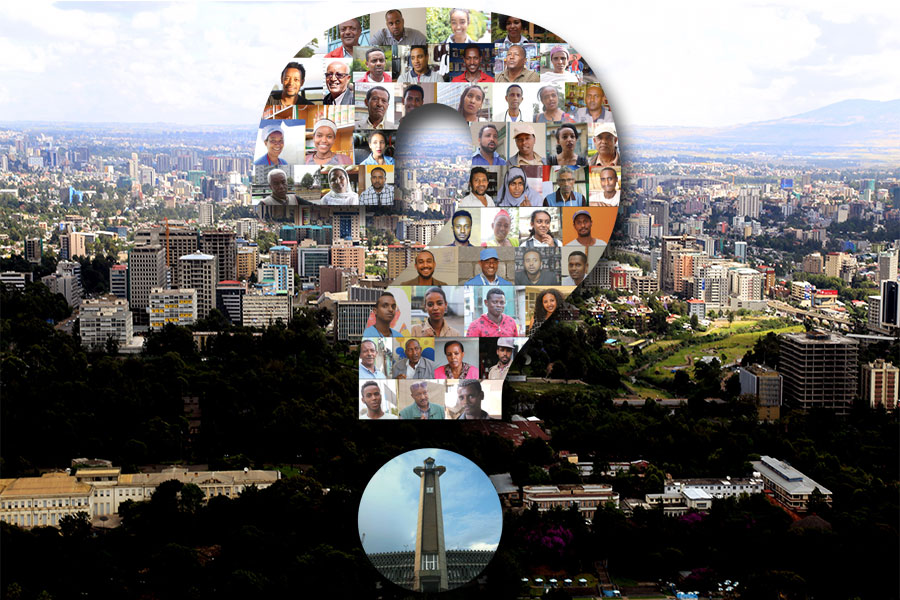
Photo Gallery | 179289 Views | May 06,2019
Oct 25 , 2025. By Yonas M. Emagnu (PhD) ( Yonas M. Emagnu (PhD), - yonas@umich.edu - a practising highway engineer and assistant professor of road and transport engineering at the Addis Abeba University. )
At key junctions of Piassa, Mexico Square to Jemo, the planned B2 corridor promises to connect with light rail and major bus routes, allowing passengers to traverse the city with a single fare and smart card. For the millions caught in traffic, the prospect is not only about saving time, but about reconnecting the city’s fragmented transport puzzle, writes Yonas M. Emagnu (PhD), - yonas@umich.edu - a practising highway engineer and assistant professor of road and transport engineering at the Addis Abeba University.
The daily rhythm of Addis Abeba is set to the frustrated thrum of engines in standstill traffic. From the Italian-era façades of Piassa, through the crowded strips around Megenagna, to the expanding suburbs of Jemo, every commute is a slow contest against time. Rush hour starts before sunrise and lingers past dusk, trapping buses, cars and minibuses in a crawl that turns a short hop into an hourlong ordeal.
Residents endure the lost minutes because they have little choice. The city’s transport lifeline, a valiant but overburdened fleet of conventional buses and a lightrail line already stretched to capacity, no longer keeps pace with rapid growth.
The World Bank estimates that traffic congestion drains Ethiopia of billions of dollars a year in lost productivity and wasted fuel. Each minute carved from the average commute puts those resources back to work in offices, factories and marketplaces. Modern Bus Rapid Transit (BRT) buses, built to cleaner standards, can replace older and highemission minibuses, cutting particulate pollution and improving air quality across the basin ringed by the Entoto hills.
For a city already feeling the health costs of its growth, the cleanair bonus is more than a footnote.
The system promises relief. The centrepiece is the B2 corridor, an exclusive lane from Piassa to Jemo. However, it remains stuck in “planning purgatory,” stalled by indecision even as congestion deepens. Cities that once faced similar gridlock chose decisive action, and reaped quick returns.
Lagos, in Nigeria, long synonymous with the word “goslows,” rolled out its first BRT lane in 2008. The dedicated corridor stretching from Mile12 to CMS produced immediate results. Average commute times on the route fell by more than 30pc, and ridership quickly climbed above 200,000 passengers a day. The Lagos upgrade, known at launch as BRTLite and now branded BRTClassic, was hardly flawless, but it showed that disciplined and highcapacity transit could flourish even in one of the world’s most chaotic traffic environments. The line’s success unlocked fresh infrastructure funding and set the template for further expansion across the city.
DaresSalaam delivered comparable gains in 2016 when it opened the first phase of the DaresSalaamRapidTransit (DART). Physically separated from traffic and equipped with smart ticketing and modern stations, the line soon drew more than 200,000 daily riders. A journey that had dragged on for more than two hours shrank to 45minutes. DART did more than move buses. It imposed order on an unruly corridor, becoming the backbone of the city’s transport plan and a showcase for what disciplined design can accomplish.
Beyond Africa, two giants underline the point. Bogotá’s TransMilenio, often cited as the gold standard, uses passing lanes at stations, express services, and a tightly integrated network to shuttle more than two million passengers every day, numbers that rival those of a metro system at a fraction of the construction cost. Guangzhou’s BRT, built into the fabric of an already dense Chinese metropolis, meshes seamlessly with the city’s subway and bikesharing grids. It is among the highestcapacity bus corridors on the planet and a reminder that BRT is a durable pillar of urban mobility, beyond a temporary fix or a secondbest option.
In Addis Abeba, conventional buses average under 15Km/h during rush hour. A protected BRT lane would let vehicles cruise at 25Km to 30Km an hour, a 100pc to 150pc jump. Articulated coaches carrying more than 160 passengers could complete extra trips each shift, doubling capacity without new purchases. Frequency would become a promise, with buses running every three to five minutes, and feeder routes funnelling riders to welllit stations.
Today’s informal minibus market rewards drivers who sprint between stops, cut across lanes and crowd curbs in search of fares. A BRT replaces that chaos with a scheduled trunkandfeeder system. Operators are paid to keep the timetable, not to race competitors, and passengers receive a service they can plan their lives around. In Lagos and DaresSalaam, the change produced quieter roads, fewer accidents and a noticeable rise in public confidence, benefits that planners in Addis Abeba could replicate along the PiassatoJemo spine.
B2 is engineered to act as the central nervous system of the city’s broader transport map. At Piassa, it would link directly with the eastwest lightrail line; at MexicoSquare, it would cross the northsouth track and key bus routes. Riders could move from a neighbourhood feeder to the BRT trunk and onto the light rail using one smart card and one fare. The effect, familiar in Bogotá and Guangzhou, multiplies with each connection. The value of every segment rises, and the fractured pieces of Addis Abeba’s network begin to operate as a single organism.
Moving from blueprint to construction requires policy clarity. The federal government and the city administration need to brand B2 a flagship program, lifting it above routine bureaucracy. They should publish a public timeline, refreshed quarterly, detailing land acquisition, utility relocation, and civil works progress. Transparency would build the trust needed to push through the inevitable disruptions and, once the corridor is running, serve as persuasive evidence for the following BRT lines.
Addis Abeba should also learn from its own rail project. The lightrail system, though popular, struggles with power shortages, maintenance lapses and overcrowding. A careful study of those shortcomings, paired with lessons from DART and other robust BRT networks, could help tailor B2 to the city’s social and topographic realities. Officials and engineers know what should be done. Residents, growing impatient, want to see shovels in the ground. The question is no longer if but how soon.
PUBLISHED ON
Oct 25,2025 [ VOL
26 , NO
1330]

Photo Gallery | 179289 Views | May 06,2019

Photo Gallery | 169486 Views | Apr 26,2019

Photo Gallery | 160392 Views | Oct 06,2021

My Opinion | 137165 Views | Aug 14,2021

Oct 25 , 2025
The regulatory machinery is on overdrive. In only two years, no fewer than 35 new pro...

Oct 18 , 2025
The political establishment, notably the ruling party and its top brass, has become p...

Oct 11 , 2025
Ladislas Farago, a roving Associated Press (AP) correspondent, arrived in Ethiopia in...

Oct 4 , 2025
Eyob Tekalegn (PhD) had been in the Governor's chair for only weeks when, on Septembe...